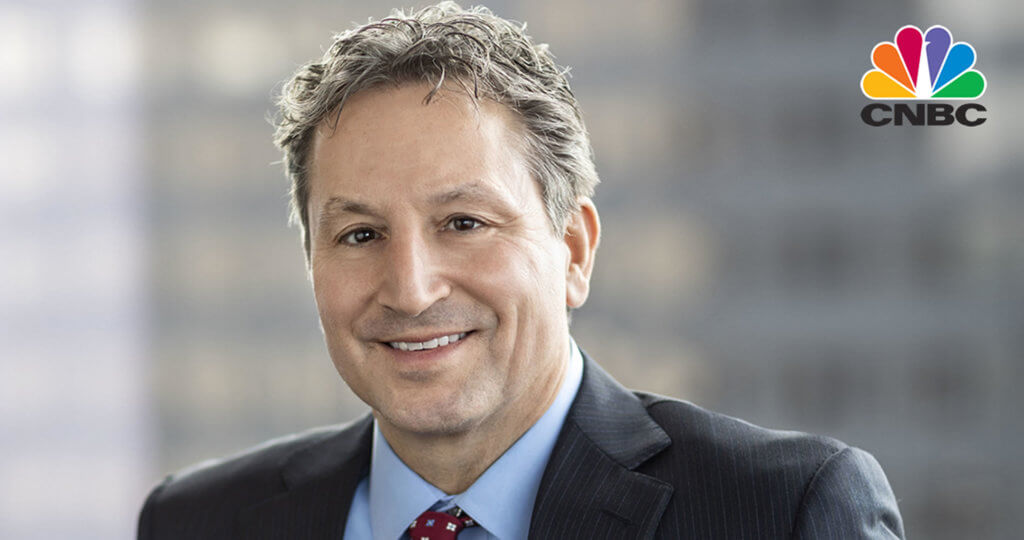Oakmark Global Fund - Investor Class
Average Annual Total Returns 03/31/16
Since Inception 08/04/99 9.59%
10-year 4.95%
5-year 5.04%
1-year -13.17%
3-month -7.27%
Gross Expense Ratio as of 09/30/15 was 1.12%
Past performance is no guarantee of future results. The performance data quoted represents past performance. Current performance may be lower or higher than the performance data quoted. The investment return and principal value vary so that an investor’s shares when redeemed may be worth more or less than the original cost. To obtain the most recent month-end performance data, view it here.
A Volatile Quarter
Although it was not particularly pleasant, the March quarter was certainly interesting. Global stocks began the year with a decline in excess of 10%, which was the worst start ever for a calendar year. The remainder of the quarter saw an uneven price recovery as investors strained to understand economic trends. A 50% rebound in the price of oil during the quarter seemed to boost investor confidence. In addition, central banks in many countries intensified their stimulation efforts. The impact of this monetary stimulation, however, remains unclear at best. One definitive outcome is negative interest rates, a heretofore almost unimaginable concept, but one that is now commonplace across European financial markets. We are uncertain if negative rates are prompting much economic activity, but it is clear to us that they are crimping banking industry profitability. Investors have also been forced to grapple with political dysfunction in some countries and increasing political populism in others. And although markets seem increasingly inured to the reality of frequent terrorism events, they contribute to a high level of investor insecurity as evidenced by the minimal returns to international markets since mid-2011.
The Oakmark Global Fund had a disappointing quarter, much of which was attributable to the Fund’s significant commitment to financial industry stocks. (We discuss this in more detail below.) The Fund lost 7% in the quarter, which compares to the MSCI World Index which remained unchanged and the Lipper Global Fund Index’s loss of 1%. Since inception in 1999, the Fund has achieved a compound annual rate of return of 10%, which compares to 4% for both the MSCI World Index and the Lipper Global Fund Index.
Issuers domiciled in the United Kingdom, the Netherlands and South Korea contributed most to the Fund’s return in the quarter, while issuers domiciled in Switzerland, the U.S. and Japan were significant detractors. The five largest contributors to the Fund’s return in the quarter were Oracle (U.S.), Itron (U.S.), Smiths Group (U.K.), Philips (Netherlands) and Samsung Electronics (Korea). The Fund holdings that detracted most were Credit Suisse (Switzerland), Bank of America (U.S.), Citigroup (U.S.), Toyota Motor (Japan), Incitec Pivot (Australia) and Julius Baer Group (Switzerland). Again, notice that four of the bottom six largest detractors from return were all financial institutions.
Fears of harsher regulations, minimal or negative interest rates hurting near-term profitability, and the risk of credit losses on loans to the oil industry have weighed on the share prices of the Fund’s financial holdings, and nearly all declined more than 10% in the quarter. Since the financial industry was the Fund’s largest sector weighting at the beginning of the quarter, it is not surprising that our absolute performance for the period was poor.
The regulatory headwind for financials has been in place for some time and has already caused us to lower our estimate of normal returns, and thus, the multiples we are willing to pay for the financials we own. While we do not expect the regulatory environment to improve, it is nice to see signs that things are not getting worse. An example of this was the lower-than-expected leverage ratio minimums set by the Basel Committee late last year. Regardless, the balance sheets of our financial holdings have improved over the past few years and meet regulatory minimums.
Quantitative easing in many countries, along with the lack of rate increases by the Fed, has caused rates to stay lower for longer than even we expected. Having said that, the possibility of rates staying below or near zero forever does not coincide with long-term credit cycles, nor do we believe the current level of inflation or growth will persist and warrant easy money into perpetuity. As rates normalize, spreads between financial industry liabilities and assets will widen, and profitability should materially increase.
Although oil prices have improved, they remain far below levels of even one year ago, and this has caused financial distress for many oil-related businesses. If oil prices stay low, there is a chance to see defaults and/or bankruptcies that would hurt the financial industry in general and our financial holdings specifically. However, when we compare our holdings’ direct exposure to oil loans with their overall loan portfolios, we believe that any losses from oil loans would primarily affect their income statements (i.e., reduce their earnings) rather than their capital or balance sheets. Since all of our financial holdings have ample capital, we do not believe that low oil prices will significantly hurt their business values.
Lastly, Credit Suisse detracted the most from the Fund’s performance, reducing the Fund’s return by 2%. One-off expenses related to litigation, pension true-up charges and write-downs on certain credit assets were negative surprises. However, these disappointing results have caused the management team to accelerate the restructuring and reduction of non-core investment banking lines of business. Though these changes may cause short-term pains, we view these actions as positive. They are in line with new CEO Tidjane Thiam’s strategy to emphasize the company’s wealth management business, which has very good secular growth trends, is fee based and requires little capital.
Portfolio Activity
As noted above, international stock indexes have stalled over the past five years while U.S. indexes have continued their choppy advance. In addition to a strong dollar, these results also reflect the fact that the U.S. economy has outperformed other developed nations over this period. We have responded to this disparate market action by gradually shifting Fund assets from U.S. to international investments; this was also true in the March quarter, as we reduced the U.S. allocation to 39%. The Fund’s commitment to Switzerland remains the largest overweighting relative to the MSCI World Index. Of course, our country weights reflect our search for the best available values in individual securities rather than our beliefs about particular countries.
We eliminated three holdings in the quarter, two domestic and one international. The three eliminations were all small positions in the Fund. We sold Kuehne + Nagel (Switzerland) as it approached its sell target in order to raise cash to purchase more attractive issues. We sold Chesapeake Energy (U.S.) and Oceaneering International (U.S.) shares as we reoriented the Fund’s energy allocation. Centene’s acquisition of Health Net also became effective in March, and the Fund received a mix of cash and Centene shares as payment. We salute Health Net’s management for their successful completion of this transaction.
CarMax was our one new purchase in the Fund. CarMax is the largest retailer of used cars in the U.S., but the company’s market penetration is still quite low. Nevertheless, CarMax already enjoys significant scale advantages in data collection and optimization. The company’s focus on data analysis provides ever-increasing advantages in inventory management and pricing. This helps CarMax to achieve industry-leading inventory turnover, which results in high returns on invested capital. We believe that the company’s growth potential is substantial, particularly given what we perceive to be weak competition.
Currency Hedges
We continue to believe some global currencies are overvalued versus the U.S. dollar. We maintained our defensive currency hedges and ended the quarter with 26% of the Swiss franc and 10% of the Australian dollar hedged.
Thank you for being our partners in the Oakmark Global Fund. Please feel free to contact us with your questions or comments.
The holdings mentioned above comprise the following percentages of the Oakmark Global Fund’s total net assets as of 03/31/16: Oracle Corp. 3.1%, Itron, Inc. 1.3%, Smiths Group PLC 1.4%, Koninklijke Philips NV 1.5%, Samsung Electronics Co., Ltd. 2.4%, Credit Suisse Group AG 5.0%, Bank of America Corp. 3.6%, Citigroup, Inc. 3.0%, Julius Baer Group, Ltd. 4.1%, Toyota Motor Corp. 3.2%, Kuehne + Nagel International AG 0%, Chesapeake Energy Corp. 0%, Oceaneering International, Inc. 0%, Centene Corp. 1.2%, Health Net, Inc. 0%, and CarMax, Inc. 0.4%. Portfolio holdings are subject to change without notice and are not intended as recommendations of individual stocks.
Click here to access the full list of holdings for The Oakmark Global Fund as of the most recent quarter-end.
The MSCI World Index (Net) is a free float-adjusted market capitalization weighted index that is designed to measure the global equity market performance of developed markets. This benchmark calculates reinvested dividends net of withholding taxes using Luxembourg tax rates. This index is unmanaged and investors cannot invest directly in this index.
The Lipper Global Funds Index measures the performance of the 30 largest mutual funds that invest in securities throughout the world. This index is unmanaged and investors cannot invest directly in this index.
The Fund’s portfolio tends to be invested in a relatively small number of stocks. As a result, the appreciation or depreciation of any one security held by the Fund will have a greater impact on the Fund’s net asset value than it would if the Fund invested in a larger number of securities. Although that strategy has the potential to generate attractive returns over time, it also increases the Fund’s volatility.
Investing in foreign securities presents risks that in some ways may be greater than in U.S. investments. Those risks include: currency fluctuation; different regulation, accounting standards, trading practices and levels of available information; generally higher transaction costs; and political risks.
The percentages of hedge exposure for each foreign currency are calculated by dividing the market value of all same-currency forward contracts by the market value of the underlying equity exposure to that currency.
The discussion of the Fund’s investments and investment strategy (including current investment themes, the portfolio managers’ research and investment process, and portfolio characteristics) represents the Fund’s investments and the views of the portfolio managers and Harris Associates L.P., the Fund’s investment adviser, at the time of this letter, and are subject to change without notice.






